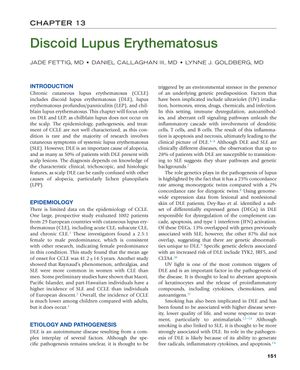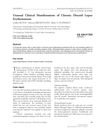Discoid Lupus Erythematosus: Comprehensive Overview and Management
July 2018
in “
Elsevier eBooks
”
Discoid Lupus Erythematosus DLE scarring alopecia ultraviolet irradiation TYK2 IRF5 CLTA4 erythematous plaques interface dermatitis lymphocytic infiltrate direct immunofluorescence photoprotection topical treatments antimalarials immunosuppressants biologic agents UV radiation topical creams antimalarial drugs biologics

TLDR Discoid Lupus Erythematosus often causes scarring hair loss, is influenced by genetics and environment, and requires early treatment to prevent worsening.
The document from 2019 provides a comprehensive overview of Discoid Lupus Erythematosus (DLE), an autoimmune disease that is a significant cause of scarring alopecia, affecting up to 50% of patients with scalp lesions. It highlights the disease's complex etiology, including environmental triggers like ultraviolet irradiation and smoking, genetic predisposition with genes such as TYK2, IRF5, and CLTA4, and immune dysregulation. DLE has a female to male predominance of 2.5:1 and typically begins at a mean age of 41.2 years. Clinically, DLE presents with erythematous plaques and can be difficult to distinguish from other alopecia forms. Diagnosis can be improved by combining histopathology, which shows interface dermatitis and lymphocytic infiltrate, with direct immunofluorescence, which was positive in 68% of the 75 patients reviewed. Management includes photoprotection, smoking cessation, topical treatments, and antimalarials, with immunosuppressants and biologic agents as options for treatment-resistant cases. The document underscores the necessity of early recognition and treatment of DLE to prevent progression to malignancy.




